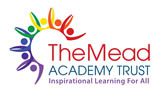The Curriculum: Design and Technology
Intent
Children design and make products that solve real and relevant problems within a variety of contexts. Through evaluation of past and present Design and Technology, they develop a critical understanding of its impact on daily life and the wider world. They acquire a broad range of subject knowledge and draw on disciplines such as mathematics, science, engineering, computing and art. Children learn how to take risks, becoming resourceful, innovative, enterprising and capable citizens.
Children should experience the joy of solving a problem and see an idea come to life. They then evaluate in order to develop the idea further, creating a finished product to the highest standard.
Our curriculum for design and technology aims to ensure that all pupils:
- Develop the creative, technical and practical expertise needed to perform everyday tasks confidently and to participate successfully in an increasingly technological world
- Build and apply a repertoire of technical knowledge, understanding, skills and language in order to design and make high-quality prototypes and products for a wide range of users
- Critique, evaluate and test their ideas and products against existing products and the work of others and make changes
- Understand and apply the principles of nutrition and learn how to cook.
Through a variety of creative and practical activities, we teach the technical knowledge, understanding and skills needed to engage in an iterative process of designing and making. The children design and create products that consider function and purpose and which are relevant to a range of sectors (for example, the home, school, leisure, culture, enterprise, industry and the wider environment).
Implementation
We teach the National Curriculum which is extended through the DT Association’s Projects on a Page national scheme of work, supported by a clear skills and knowledge progression. This ensures that skills and knowledge are built on year by year and sequenced appropriately to maximise learning for all children. The context for the children’s work in Design and Technology is also well considered with regular reference to existing products.
Each year group will complete three DT units a year. Each unit should be planned to progress through the explore, design, make and evaluate cycle, and the skills learned in each section accumulate with the children utilising all of them in their final product design.
Children are presented with a purpose or a problem. Teamwork, exploration of existing products, prototypes and preliminary sketches are used in order to help the children with their problem solving. Through designing and making products that solve real and relevant problems within a variety of contexts, they consider their own and others’ needs, wants and values. Children are given choice and a range of tools to choose from. They evaluate their own products against a design-criteria with each of the steps rooted in technical knowledge and vocabulary.
Children are taught safe procedures at all times when using any tools, and safe working practices are used at all times.
Good buildings come from good people, and all problems are solved by good design
Intent, Implementation, Impact
Find out more about our approach to the intent, implementation, and impact of teaching DT
